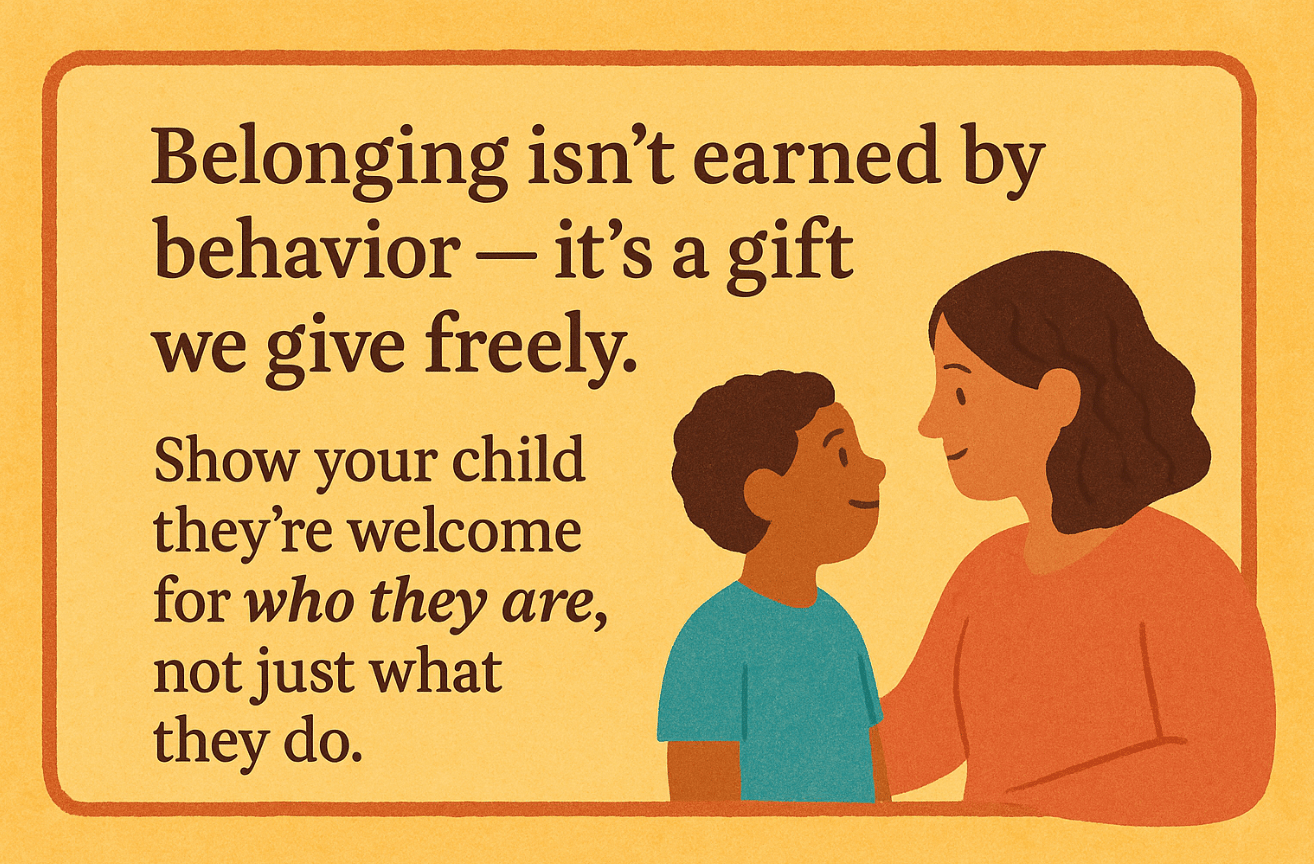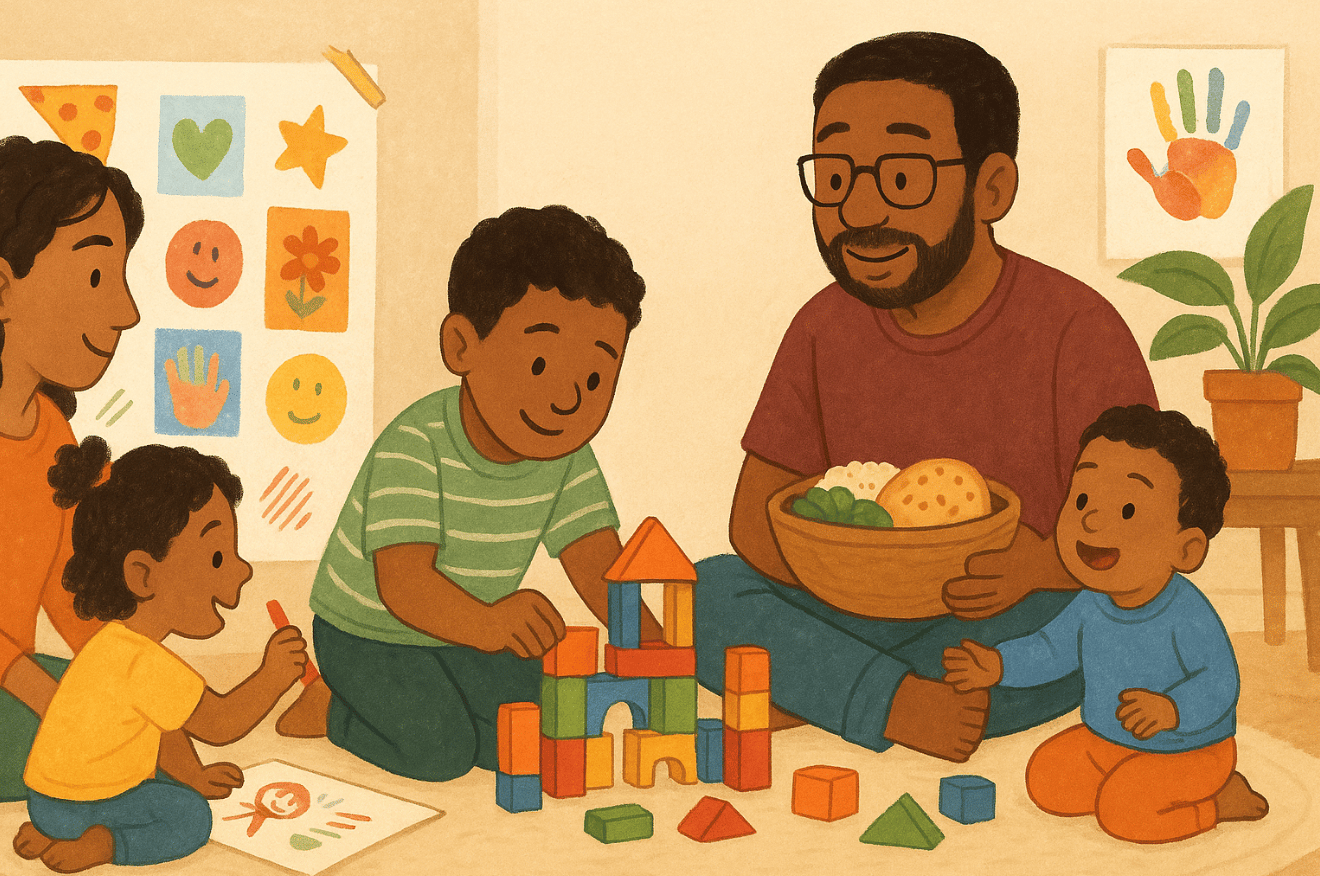- Playful Parent
- Posts
- This week's activities 09/29
This week's activities 09/29

Fact-based news without bias awaits. Make 1440 your choice today.
Overwhelmed by biased news? Cut through the clutter and get straight facts with your daily 1440 digest. From politics to sports, join millions who start their day informed.
Hey , here are some new activities to try out
💛 A Little Click Goes a Long Way
We carefully choose the ads in this newsletter to make sure they’re family-friendly and relevant. When you click on them, you’re helping keep Playful Parent free and thriving—so thank you for supporting us with just a tap or two!
Welcome to week 35 of Wonder Weeks: a year of creativity, curiosity and connections. ☀️ This Week’s Theme: All Are Welcome
Every child longs to know: Do I belong here? Am I welcome just as I am?
Belonging is more than a warm feeling — it’s the foundation of confidence, empathy, and resilience. When children feel truly welcome at home, they don’t have to shape-shift or hide parts of themselves to be loved. Instead, they grow up secure in the knowledge that their uniqueness is celebrated, and they naturally learn to extend that same welcome to others.
This week’s activities help families create little rituals of inclusion — simple but powerful moments that say: In this family, all are welcome.

🌈 Let’s stay connected!
For daily tips, playful moments, and gentle reminders—we’re on social too.
Come say hi and join the cozy parenting community 💛
We would love to feature you!
👉 [@playfulparent] – come say hi!

Note: activities may be similar for kids of a similar age.

Activities
🌈 All Are Welcome Week
✨ Belonging is what helps children grow roots and wings. This week, families will celebrate that everyone belongs just as they are. Activities are simple to set up at home, but big on meaning and connection.
🖼️ 1. Family Collage Wall
Ages: 3–9 | Skills: Self-expression, storytelling, fine motor
Materials: Old magazines, paper scraps, markers, glue/tape, scissors
How to Play:
Give each family member a piece of paper to create their “self-piece.”
Draw, cut out, or glue things that represent favorite foods, hobbies, colors, or feelings.
Combine all pieces onto a larger sheet or wall space to form a “family quilt.”
Take turns explaining why you chose your items.
Level Down (2–3 yrs): Parents can cut images and let toddlers choose and glue.
Level Up (7–9 yrs): Add a written caption under each piece.
🧠 Why it Matters: Helps children see that their uniqueness adds to the whole — belonging is built from differences.
🚶♀️ 2. Welcome Walk + Photo Hunt
Ages: 3–9 | Skills: Observation, empathy, early photography/art
Materials: Phone or tablet camera (or crayons + paper if no device)
How to Play:
Take a short walk around your block or building.
Look for things that are different but all belong — doors in different colors, pets, flowers, textures.
Take photos or draw your findings.
Back at home, share: “What makes these differences beautiful?”
Level Down: Parent points out differences, child names or points.
Level Up: Create a “Welcome Album” of photos or sketches.
🧠 Why it Matters: Teaches kids that diversity is everywhere — and that it’s something to welcome, not fear.
🍲 3. Culture Kitchen
Ages: 3–9 | Skills: Cultural awareness, sensory exploration, cooperation
Materials: Any simple ingredient from your kitchen (rice, tortillas, noodles, etc.)
How to Play:
Pick a food with a story behind it.
Invite your child to help measure, stir, or taste.
Talk about where it comes from: “This rice is eaten in many countries — how cool that it’s on our table too.”
Ask: “What food makes you feel welcome?”
Level Down: Keep it snack-sized (fruit, bread, crackers).
Level Up: Look up a kid-friendly recipe together.
🧠 Why it Matters: Links belonging to sensory memory and culture, teaching kids to honor their own roots and others’.
🧱 4. Kindness Builders
Ages: 3–9 | Skills: Problem-solving, empathy, symbolic play
Materials: Blocks, LEGO, cups, or cardboard boxes
How to Play:
Build a “Welcome City” together.
Each block represents an act of kindness (sharing, helping, inviting).
Pretend visitors are coming — what kindness must be in place to welcome them?
Knock out a block to see: “Can the city stand tall if kindness is missing?”
Level Down: Use fewer blocks, act out simple scenarios (e.g., “This block is sharing toys”).
Level Up: Write kindness words on the blocks with tape or sticky notes.
🧠 Why it Matters: Shows children that kindness is the structure that holds community together.
📚 5. Story Swap + Twist
Ages: 3–9 | Skills: Language, perspective-taking, imagination
Materials: Any storybook or even a toy to “make up” a story
How to Play:
Read a story (or choose a character).
Pause and ask: “What if this character lived in our family? How would we welcome them?”
Let kids imagine how they’d share space, food, or playtime.
Level Down: Act it out with stuffed animals or toys.
Level Up: Write/draw a new ending where the character finds belonging.
🧠 Why it Matters: Builds empathy by helping kids see themselves as welcoming others.
🐣 Bonus Activities for Little Explorers
✋ Handprint Rainbow Path
Ages: 2–4 | Skills: Fine motor, color recognition, sequencing
Materials: Paper, crayons or markers
How to Play:
Trace each family member’s hand in a different color.
Line them up in a row like stepping stones.
Walk fingers across them saying, “Every hand helps make the path of welcome.”
🧠 Why it Matters: Toddlers see that each family member contributes to the “path” — and all hands belong.
🎵 Welcome Song & Dance
Ages: 1–4 | Skills: Rhythm, body awareness, social joy
Materials: Just your voices or a favorite upbeat song
How to Play:
Sing the words “All are welcome here!” to any tune (make one up if needed).
Dance, clap, or march while singing together.
Let your toddler lead one silly move that everyone copies.
🧠 Why it Matters: Even little ones can experience belonging through music and movement.
🌙 Closing Reflection
Welcoming isn’t just something we say — it’s something our children feel in the daily rhythms of home. It’s in the way we listen to their stories, the space we make for their quirks, and the joy we show when they walk into the room.
When children know they are unconditionally welcome, they carry that safety into every corner of their lives. They become braver learners, kinder friends, and more compassionate neighbors. And perhaps most importantly, they grow up believing that difference is not a threat — it’s a gift.
By practicing welcome at home, we’re teaching our children the lesson the world most needs: that every person has a place, and every voice belongs. 🌈
What did you think of this week's activities? |
Seeking impartial news? Meet 1440.
Every day, 3.5 million readers turn to 1440 for their factual news. We sift through 100+ sources to bring you a complete summary of politics, global events, business, and culture, all in a brief 5-minute email. Enjoy an impartial news experience.